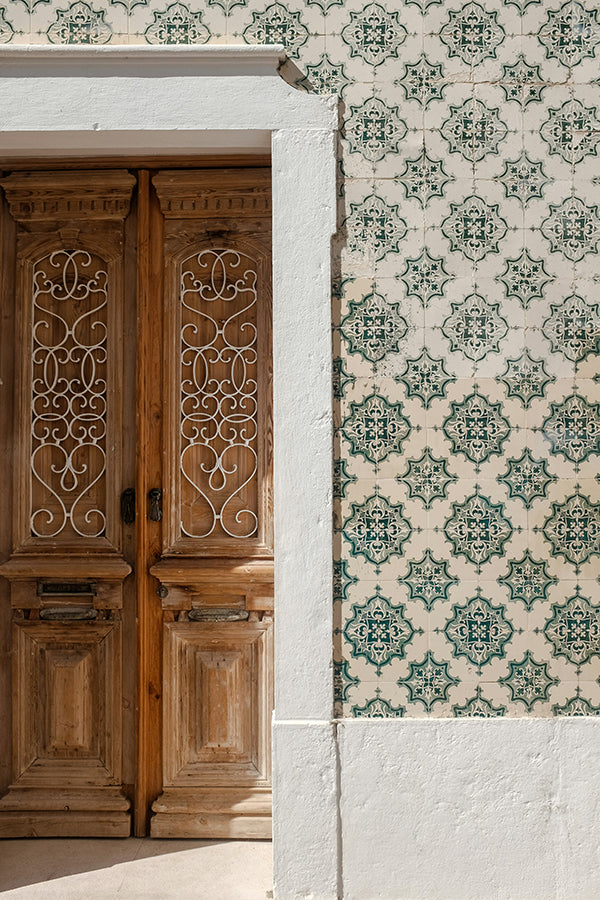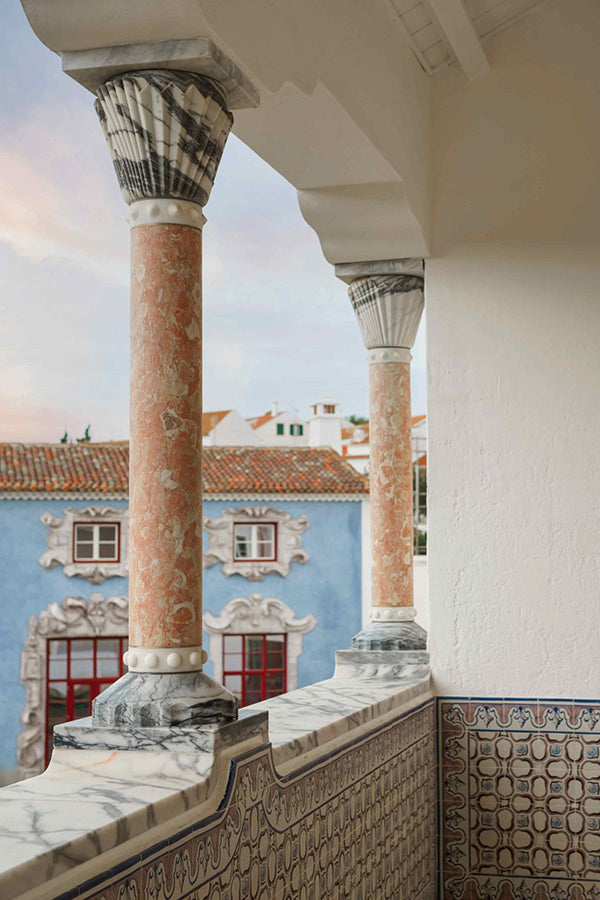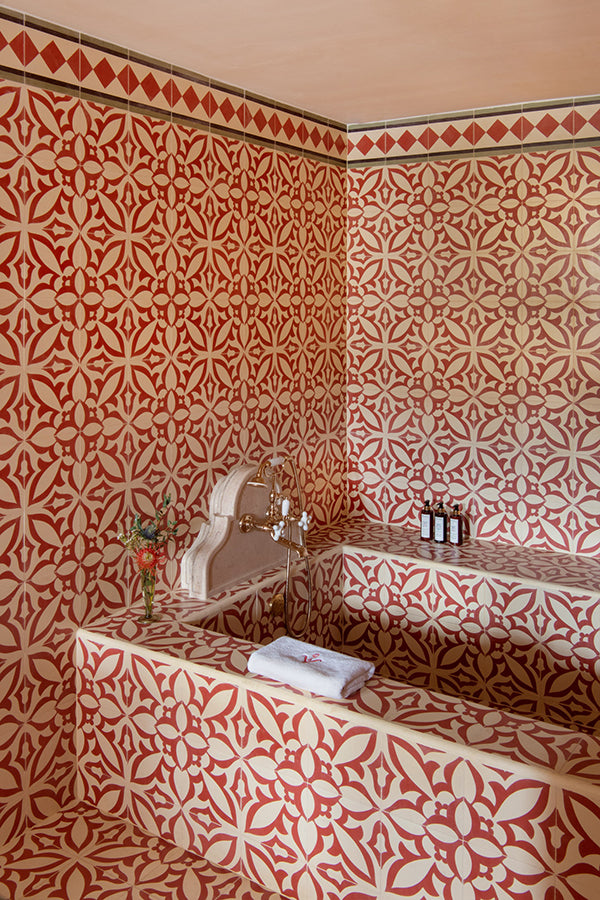clé travels: Portugal edition
by clé tile | published: Mar 14, 2024
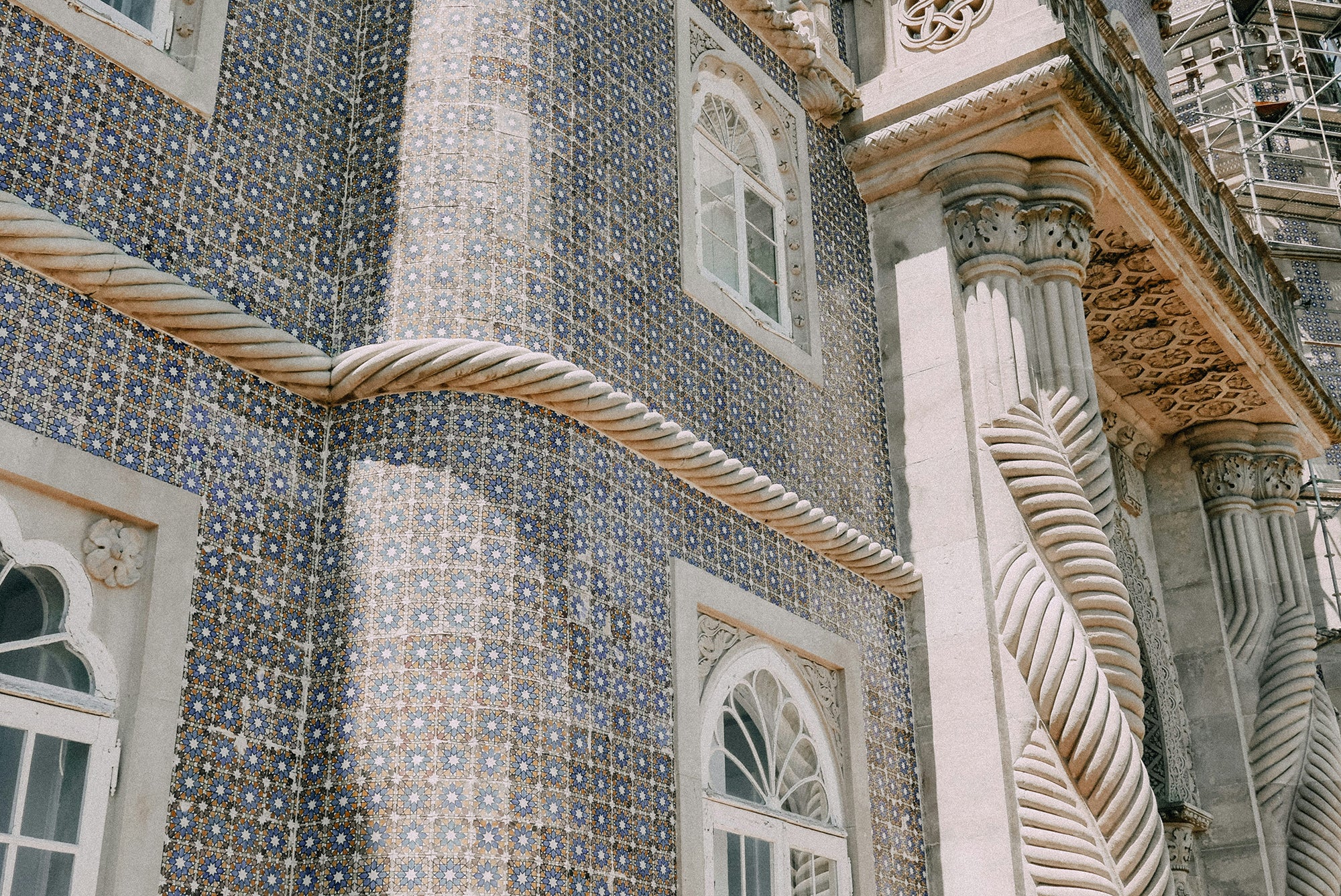
A façade in Portugal, Photo courtesy of vitaly mazur
from its founding myth (that the country was established by noted wanderer Odysseus), its history, to its culture, architecture and its very name, the heart of Portugal is the movement of people and the convergence of cultures. All of which has cemented tile into Portugal’s national identity.
History of Azulejos Tile
While the 800-year Moorish occupation of the Iberian Peninsula is felt throughout the region, nowhere is its influence felt quite as strongly as the tile tradition it left behind, starting in the 8th century. Called azulejos, the tiles took direction from their Islamic counterparts. In fact, the name azulejos is a lingual contraction of the Arabic name for Islamic geometric tilework, zellij (from al-zellij meaning “polished stone”). Portugal originally imported the tin-glazed ceramic pieces, but in the 16th century, the country began its own production. Since this time, the tile has extended through the country, wrapping itself over entire architectural façades from the sacred and princely to the humble and profane.
Portuguese azulejos are used differently from most other tiles. The pieces are often custom planned and made for a specific architectural space, allowing the tiles to create spectacular mural-like scenes once installed. The subjects chosen often reflect the purpose of the space, whispering symbolic messages through the walls.
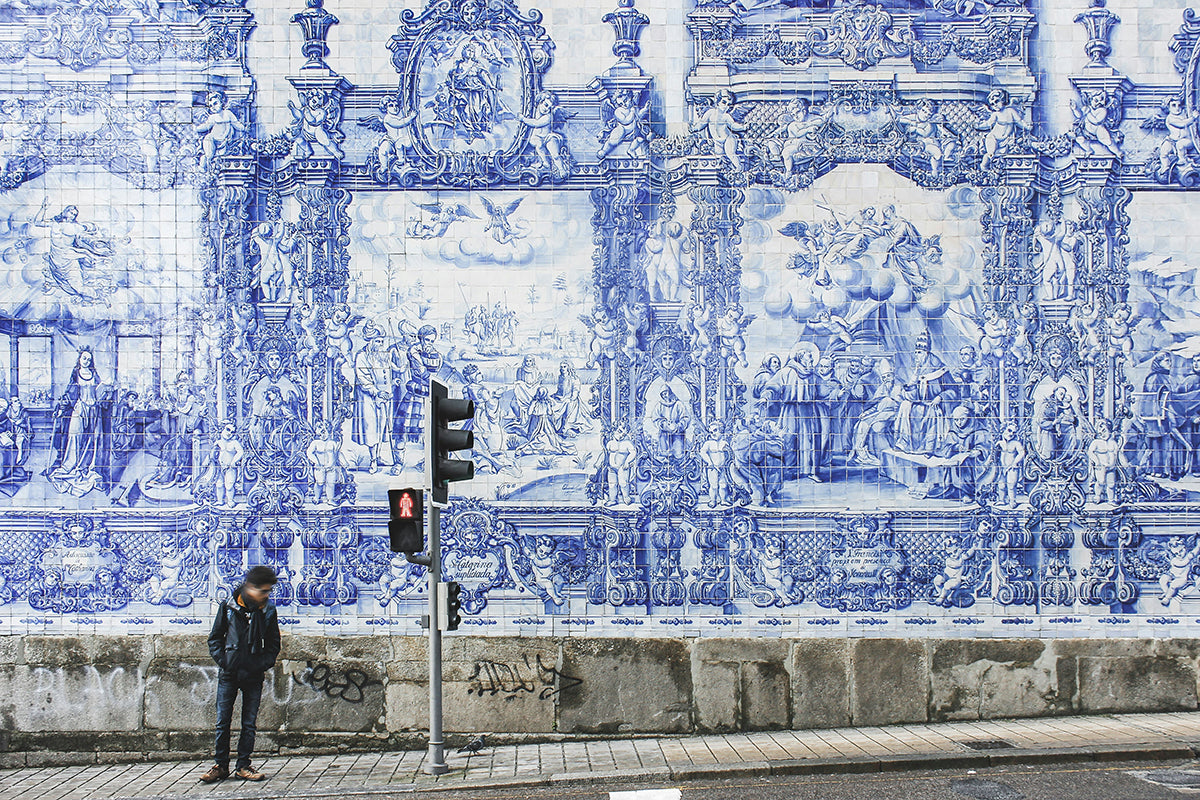
The exterior of the Capela das Almas, Photo courtesy of Dominik Kuhn
Two exuberant examples of this are the Capela das Almas (Chapel of Souls) and the São Bento Train Station, both in Porto. The Capela das Almas is blanketed with over 15,947 blue and white tiles depicting scenes from the lives of many saints, including the martyrdom of St. Catherine, for whom the chapel is dedicated. The interior of the São Bento station showcases blue and white azulejos panels that cover nearly every surface. The panels depict scenes from Portugal’s history, as well as daily life.

Azulejos in São Bento Train Station, photo courtesy of Jose Goncalves
While the traditional blue and white color scheme was originally influenced by Chinese porcelain, not all azulejos stick to this palette. The frieze above the São Bento panels, for example, features a colorful azulejos mural telling the story of transportation in Portugal.
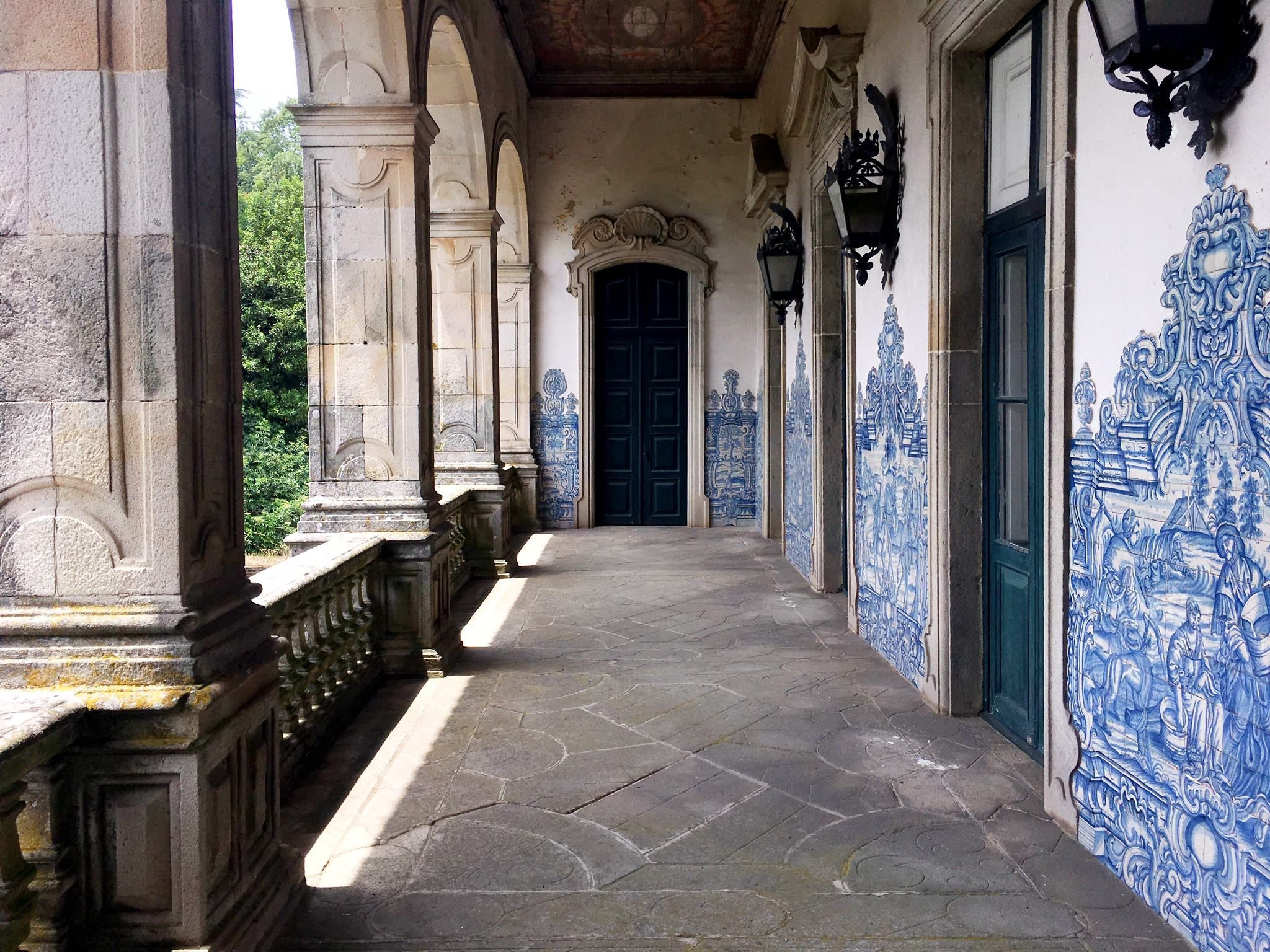
The exterior of the Capela das Almas, Photo courtesy of Dominik Kuhn
Interior Re-define
Spend a night at the Casa dell’Arte Club House in Lisbon for azulejos inspiration for your own home. Arguably one of the most beautiful tiled buildings (in a city filled with beautiful tiled buildings), Casa dell’Arte features an impressive display of blue, white, and yellow azulejos on the facade. The exterior is Instagram worthy, but the true beauty comes from within. Featuring entire rooms clad in the famous blue and white azulejos the city is known for, the interior is a must see for anyone longing for tiles.
Nuns the Word
The Museu Nacional do Azulejo is a treasure trove for azulejos-lovers with tiles dating from the 15th century to the present day — all housed in a 16th century convent. Visitors can see historic azulejos both on exhibit as well as installed throughout the building.
Gardens of Earthen Delights
Serving as the location for the Colégio Manuel Bernardes, the gardens of Quinta dos Azulejos provide a notable example of 18th century Portuguese tile. (One of many parks and gardens worth a stroll for those interested in landscape design.) Enter through iron gates flanked by tiled columns and walls displaying biblical, mythological, and landscape scenes. Tiles also encase benches, pathways, and fountains, hugging each Rococo curve with blues, whites, and yellows.
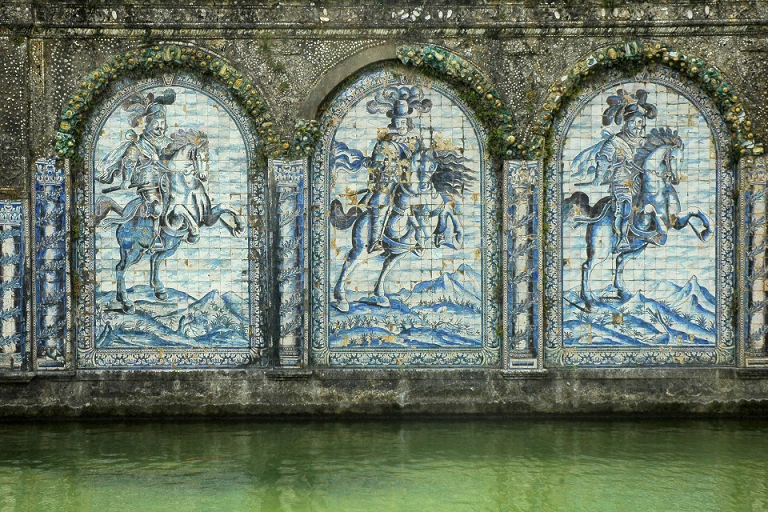
The twelve knights of england in the gardens of the marquis de fronteira. Image courtesy of Portuguese Tiles
Though privately owned and inhabited, the Palácio dos Marqueses de Fronteira and its gardens are open to public tours, showcasing 17th century azulejos throughout both the palace and grounds. The formal gardens display several architectural elements clad with historic tile including the Tanque dos Cavaleiros (Lake of Knights) and the Galeria dos Reis (King’s Gallery), as well as five fountains and a grotto known as the Casa do Fresco (House of Freshness).
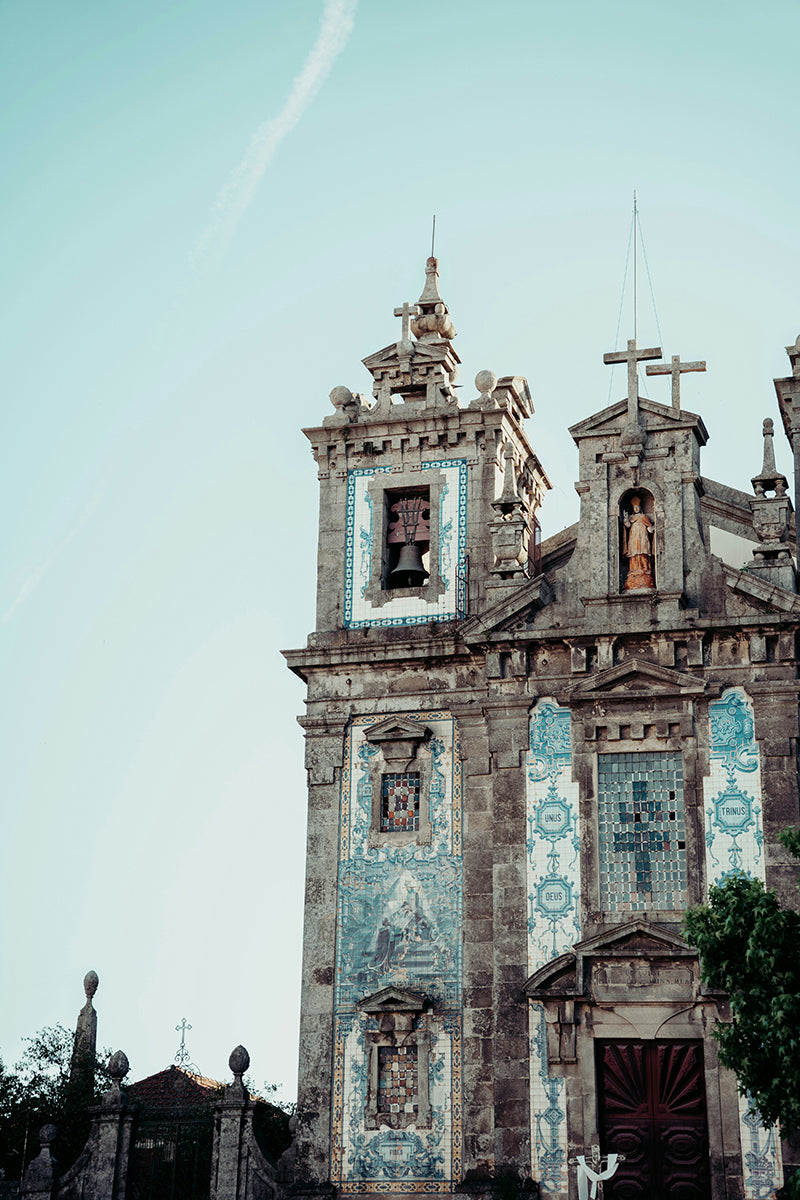
Igreja de San Ildefonso in Porto. Image courtesy of Emanuel Haas.
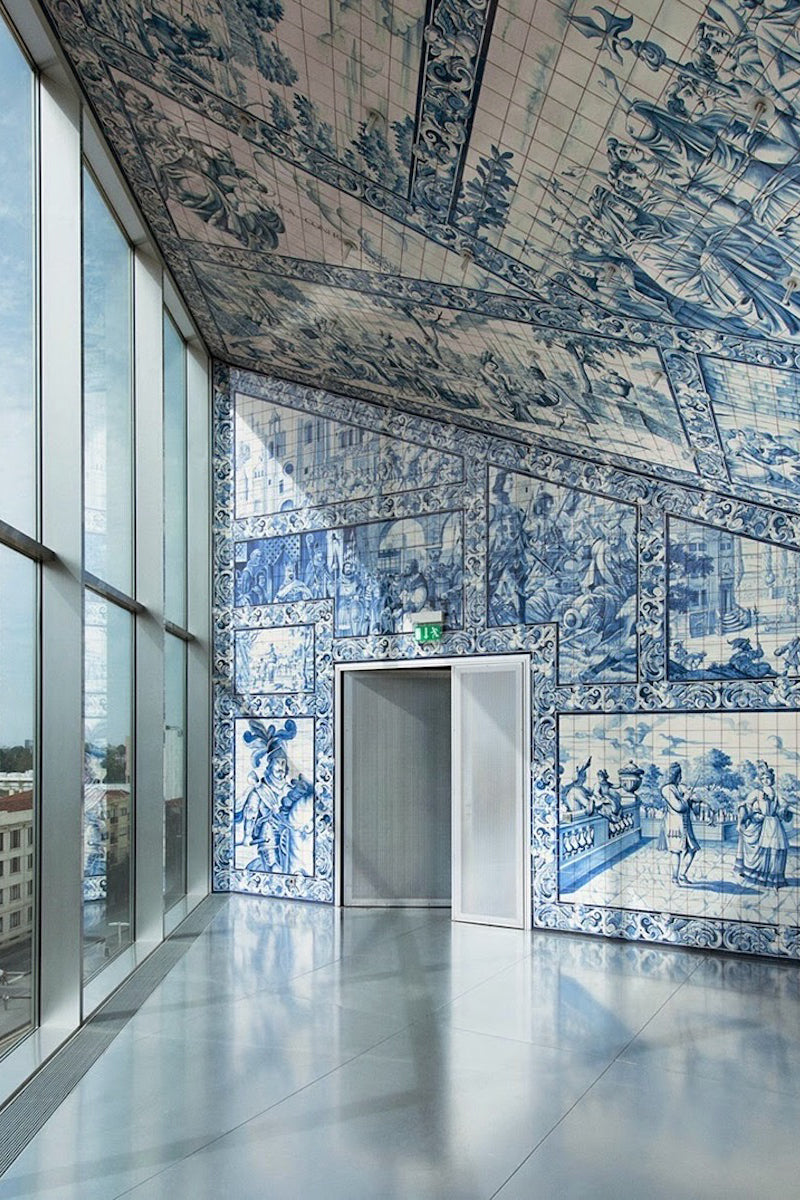
Casa da Música, Porto, designed by Rem Koolhas. Image courtesy of quintessence blog.
Tile in the Wild
Anyone wanting to see azulejos in the wild won’t have a problem — all you need to do is look up. But for something extra, meander through the older neighborhoods throughout Portugal, where you’ll find dozens of tile-clad homes surrounding picturesque views. Located along the bank of Porto’s Douro River, Ribeira is famous for its vibrantly colored buildings that dot the promenade. Located in the historic center, the lively district is bustling with many cafes and restaurants offering drinks and petiscar (Portuguese snacks). Lisbon’s Alfama neighborhood, on the other hand, with its cobbled alleyways and azulejos walls, maintains the simplicity of old Europe. Built on bedrock, the district was spared from a major earthquake in 1755, leaving its web of narrow streets and tiny squares intact.
A history told in blue and white (and sometimes vibrant yellows and reds).
-Julie Muniz
